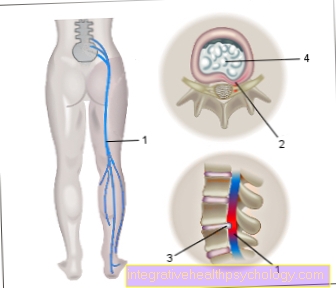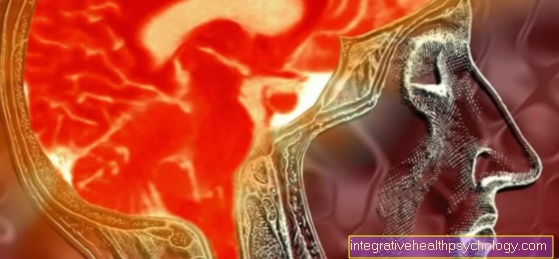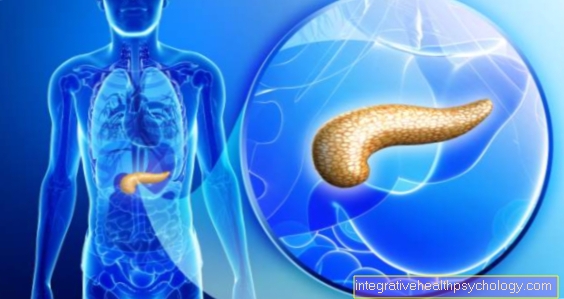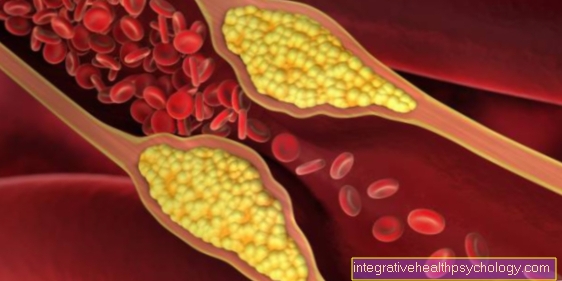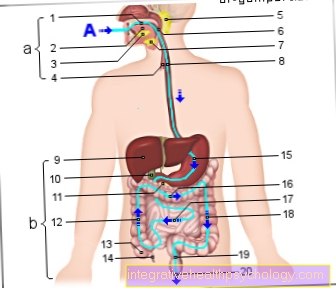Course of a glioblastoma
introduction
Glioblastomas are malignant cancers that arise in the brain from its own cells, so-called astrocytes. They are often very aggressive and fast growing, and usually come with a poor prognosis. This can also be seen from the fact that they were categorized as level IV in the WHO tumor classification, which corresponds to the highest level.

How is the normal course?
Most patients who suffer from glioblastoma fall ill between the ages of 50 and 65. However, children and young people can also be affected. Women and men are affected roughly equally often.
Since the tumor grows very quickly, symptoms often arise within a very short time. These express themselves multiform: Seizures can occur, patients often report headaches. In addition, changes in personality, dizziness or visual disturbances are not uncommon. Under certain circumstances, however, the tumor can be detected as an incidental finding without symptoms.
If left untreated, the tumor leads to death within a few weeks to months, which is why treatment is indicated as soon as possible. This usually consists of surgical removal of the diseased tissue. Radiation and / or chemotherapy often takes place afterwards.
In general, however, a complete cure is not possible, the measures taken only serve to delay the disease and improve the patient's quality of life. There are also often recurrences, which then have to be re-evaluated and possibly removed again.
Read more on the subject at: Glioblastoma
What is the course of a grade 4 glioblastoma
Glioblastomas are classified as fourth-degree astrocytoma in the classification of brain tumors. This classification says something about the prognosis. In the case of fourth-degree brain tumors, this ranges from a few months to a few years, depending on the tumor and the available therapy. The glioblastoma can rarely be completely removed because it spreads quickly and diffusely and often brings many metastases to the brain. The only therapy available so far is mainly aimed at symptom relief. In addition, the recurrence rate is very high here, which means it is likely that the tumor will recur.
For more information, see: Grade 4 glioblastoma
What is the life expectancy?
The average life expectancy with a glioblastoma is only about ten to fifteen months after diagnosis. The reason for this lies in the malignancy and aggressiveness of the tumor.
As described above, complete resections are usually not possible and the tumor usually returns within a year despite radiation and chemotherapy. Since every operation is associated with the loss of brain tissue, the maximum of therapy is reached quite soon.
In individual cases there are always long-term survivors who survive for years with relatively few side effects and under therapy. However, these are an absolute exception. Scientists are currently still faced with a great mystery because of their survival.
Read more about this under Life expectancy with a glioblastoma
What has a positive effect on the course?
The diagnosis of glioblastoma is always a fatal one: almost every patient dies sooner or later of their cancer. However, there are some factors that have a positive effect on the result of the therapy, which consists of surgery and radiation including chemotherapy.
Age is a decisive factor for the survival of a patient: the younger and healthier (i.e. fewer comorbidities) a person is, the more likely a primary therapy will be successful and the longer the patient will survive. In general, it can be said that patients who receive a therapy usually have a better survival rate than those who refuse it or cannot perceive it for other reasons.
The cellular nature of the tumor also has an impact on the course: there are so-called large and small cell glioblastomas. The large cells are provided with a slightly more positive prognosis.
A genetic component also seems to have an impact on survival, the so-called methylation of the MGMT promoter. This can improve the response to chemotherapy. However, since this is not always the case, it is currently being researched further to clarify its implications for treatment.
Read more on the topic: Prognosis of a glioblastoma
What are signs of a negative outcome?
Signs of a negative course of the disease are first of all old age. The prognosis for patients over 50 years of age is worse than for those under 50. The size of the tumor and, above all, its “behavior” are also important: if so-called edema, an accumulation of fluid around the tumor, presses on the surrounding tissue and harm it. The more pronounced the edema, the more severe the symptoms are often.
If the operation is complicated or unsuccessful, the prognosis is also poor. Unfortunately, patients who continue to suffer from neurological complaints after the operation are often severely affected.
The patient's disease status also has a negative effect on the result of the therapy: If many secondary diseases are known and / or if he is in a poor general condition, a poor outcome can be expected. The same applies to the nutritional status. Since many patients lose a lot of weight during therapy, poorly or malnourished patients are at a disadvantage here.
How do you know that the end stage has been reached?
If you are diagnosed with glioblastoma, you always have to ask yourself whether it is operable or not. Various factors play a role here. The size and location of the tumor are very important. For example, if it is located near vital structures or if it is difficult or impossible to delimit it from them, it is referred to as inoperable. It is also always important whether the operation can be expected to improve the patient's living situation. Sometimes the tumor is in the brain in such a way that surgery would either not relieve symptoms or make them worse; in this case one would not operate either.
If the glioblastoma is declared as inoperable, radiation and chemotherapy are usually the only treatment options. However, these are not healing, but are only intended to make the patient more bearable in the end. If the patient's vital functions (breathing, circulation, metabolism) deteriorate, if their consciousness slowly becomes cloudy (drowsiness, confusion or even a coma) and / or if they are in severe pain, these are often signs that the patient will not be long has to live. The tumor is not itself the critical part, but the neurological failures, which it causes by displacement of the brain tissue, make the condition worse. Organ failure often occurs in the end, in which case the patient dies within a few days.
For more information, see: End-stage glioblastoma

